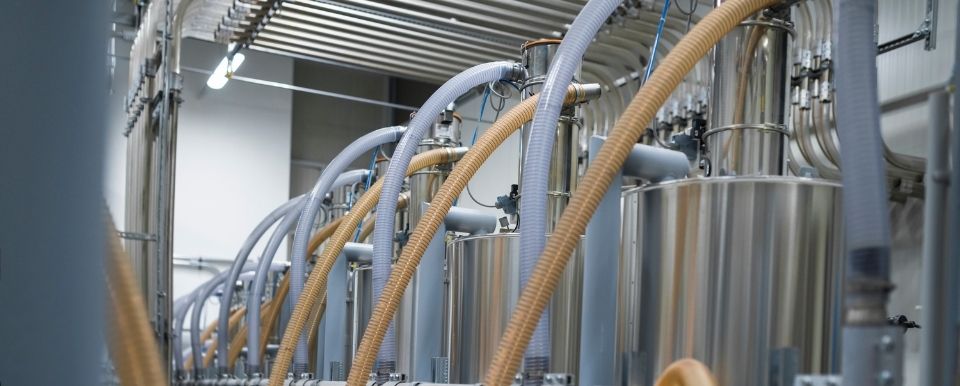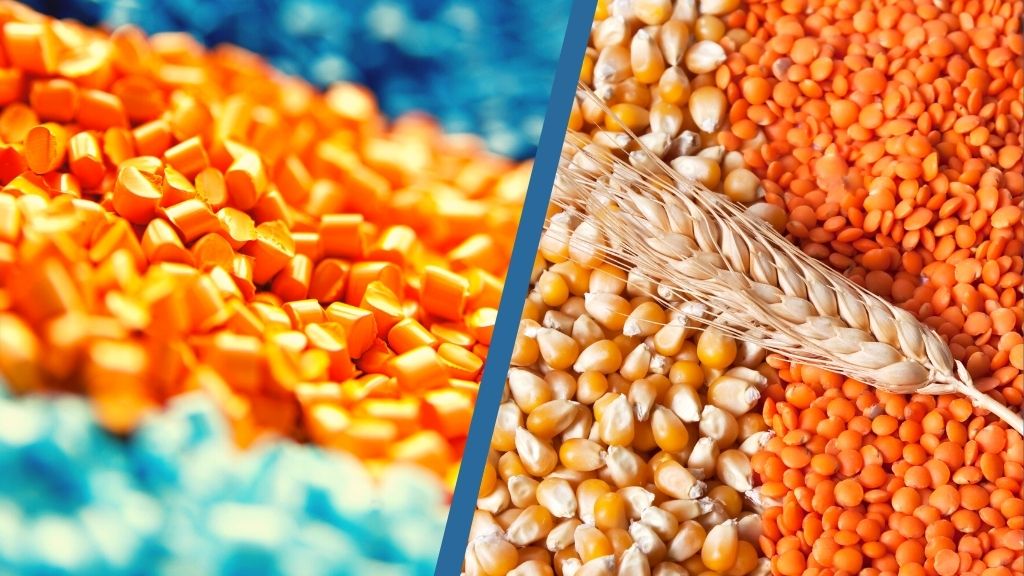Why Should You Convey Your Material Pneumatically?
Why Should You Convey Your Material Pneumatically?
Types of Conveying Systems:
Primarily there are two types of conveying systems i.e. mechanical conveying systems and pneumatic conveying system. While the characteristics of each material and the requirements of the specific process may clearly dictate one technology over another, both mechanical and pneumatic conveyors are suitable for most bulk conveying applications.
One of the most important factors to consider is the properties of the material to be conveyed, including bulk density, flow properties, temperature, moisture content, inherent hazards and allowable degree of degradation. Both pneumatic and mechanical conveyors will handle a wide range of products, from fine powders to large particles. Both types are often designed to move materials that are friable or fragile, also temperature-sensitive materials.
Industries know the importance of pneumatic conveyors in transferring bulk quantities of materials from one place to a different one. Pneumatic conveying systems are specially designed to hold stream of air and mixture of bulk solid material. They contain pipes or ducts which are referred to as transportation lines.
In most of the cases, the bulk solid is in dry powdered or granular form which is being transferred using pneumatic conveying system. They can be food related which being charged into vessels/mixers, chemicals being charged into reactors and even polymer granules being charged into hoppers above extruders or injection moulding machines.
There are two major classes of pneumatic conveyors based on mode of transport: dense phase systems & dilute phase systems; Dense phase pneumatic conveying systems are high pressure systems used to convey material to large distances and are especially useful for fragile or abrasive material due to its low velocity nature. Dilute phase pneumatic conveying systems are low pressure high velocity systems which have utmost flexibility for the kind of range of materials that can be handled. The air flow may be generated with air compressors or blowers.
Pneumatic conveying is typically used to transfer solids of all sizes at process plants with specific intervals. The procurement of several of the elements comprising a conveyor system such as rotary valves, conveying pipes and air movers is examined, particularly because it concerns the reliable operation of a conveyor system.

A standardized mechanical conveying device operates in a straight line with minor directional adjustments, usually requiring its own motor and drive for each directional shift. It often has a fairly significant number of moving pieces, usually involving regular maintenance. Often, the machine appears to take up much precious real estate in a plant. Pneumatic conveying system, on the other side, uses a basic pipeline with a small diameter to move material. The system is totally enclosed and has few moving parts as it is electronically managed. It is completely dust free and is easier to maintain.
There are three basic systems that are used to generate high velocity air stream.
Suction or vacuum conveying systems for drawing material with the ambient air using vacuum produced in the pipeline. The system is operated at low pressure, that can be about 0.4 to 0.5 bar (g) below the atmosphere, which is primarily used to move light-free flowing products.
Pressure type systems can use a positive pressure to move material from one point to another. The device is suitable for moving material from one loading point to different unloading locations. Conveying pressures can range from 0.5 to 4 bar (g).
Combination systems, utilizing a suction device to move material from a number of loading points and use a pressure method to transfer it to a range of unloading points.

Blowers / vacuum pumps / compressor
Filter receivers
Cyclone Separators
Bin vents & Dust collectors
Silos day bins and other storage vessels
Pipeline
Feeding device
Air separator
Control panels and electrical equipment
Dense-Phase Conveying System:
This type of conveying system transfers the materials whose particles are either heavy and enormous, fragile or abrasive. As heavier particles cannot remain suspended within the air flow, large molecules can’t be conveyed by the high velocity air in dilute-phase system. In such cases, dense phase conveying system is employed which may transfer heavy materials in bit through pipeline. Fragile materials need to be conveyed at a lower velocity to preserve their integrity. Abrasive materials need to be conveyed at low velocities to minimize pipe erosion. Example: Sand, sugar, carbon black.
The dilute or lean phase pneumatic conveying system depends on the momentum of the airstream to pick up and transfer each particle, keeping the particle in suspension on along the conveyor. The material never settles at the bottom of the pipeline. It works at a fairly high momentum at a relatively low pressure differential. The intake velocity at the outset of the device (i.e the airflow velocity at which material is picked up and transfer at material feed point) is usually regarded to be the most important area in the device, since at this stage the air is at lowest intensity of the whole system. A well designed pneumatic conveying system will have this velocity well optimized and hence minimize energy consumption. The major advantage of the dilute phase conveying system is flexibility. There is a wide range of materials that can be conveyed in the dilute phase as compared to the limited materials that can be conveyed in a dense phase. Examples: meal, maize.
When you have to transfer objects like cans, boxes, and plastic containers, the air-activated gravity conveying system are used. They use pressure for transferring such objects through the transportation lines. These sorts of conveying system work totally different from both of the above types.
Pneumatic conveyors offer greater cost effectiveness when conveying in higher capacities and/or over longer distances.
Dust-free operation at production point.
Materials remain sanitary and promote plant hygiene.
A simpler method for product pick-up process.
Increased safety to the operators and maintenance workers.
It requires very low maintenance.
Helps to enhanced flexibility.
It helps to prevent any product leakage and contamination.
Pneumatic conveying systems require very little space as conveying is through pipes.
They are easy and quick to install and maintain.



